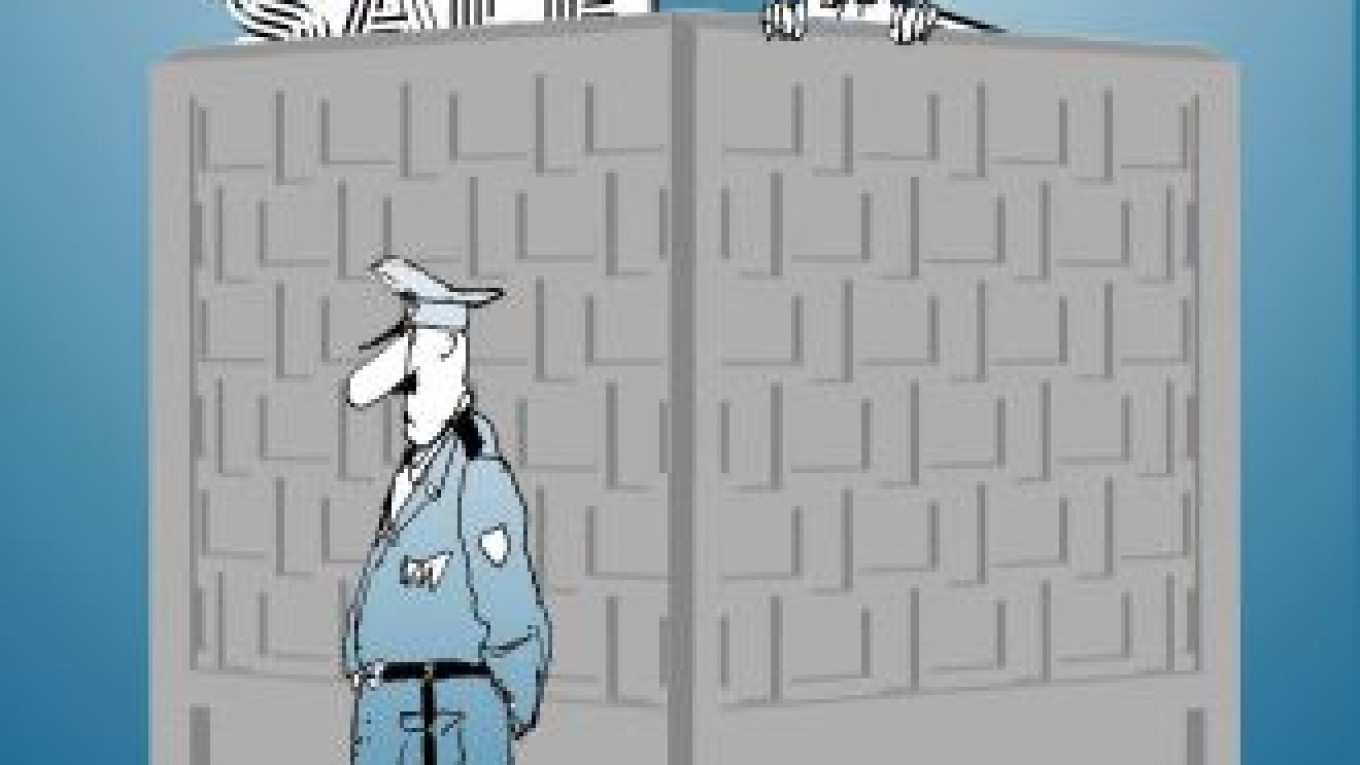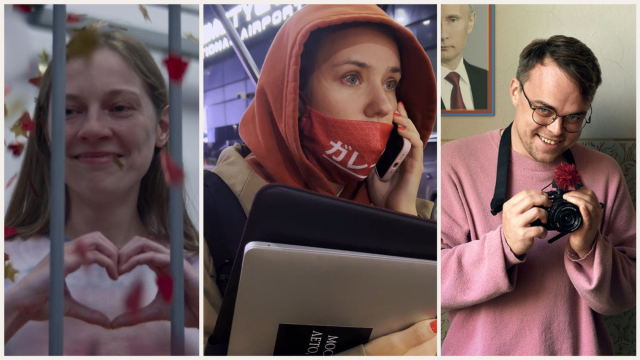Many have tried to get rid of them before, but somehow over the years the kiosks survived the promises of cleanups, police raids and the wanderings of the hapless down-and-outs and taxi drivers, the type that were brought up by wolves until expelled after the wolves realized they were too uncouth for pack life.
But this week the city authorities came up with a unique way of closing off this network of kiosks, part of the pungent aura of the area by Komsomolskaya metro station and the three train stations it leads.
Taking a leaf from the Berlin city government’s General Plan, circa 1961, they brought in their own wall to put up around the kiosks, a box that looked as if it had come down from the sky to trap those inside.
If you don’t know, these were the kind of kiosks that switched between selling the kind of porn that would make Charlie Sheen blush, knives sharpened ready for the worst you can imagine on a train heading far north along with vaguely respectable, shoddily made goods and as many karaoke videos you need for a restaurant car on a mission to Syktykvar. The switch between when the kiosks would sell the former or the latter was either signaled by the howl of a wolf or when the last vaguely conscientious policeman went off duty at night.
This was no ordinary wall, but the waffle-shaped concrete gates that you can see from here to Kamchatka and back again designed because of their emphasis on concrete, concrete and more concrete, blocking anyone from seeing what is going on behind — whether it is a military base, a construction site or illegal kiosks that somehow survived in the center for more than a decade without anyone doing anything about them.
Mayor Sergei Sobyanin has said he wants to get rid of the concrete gates, an ambitious call, but still some have disappeared. Up until a few weeks ago, there was a line of the concrete walls near where I live. They stood behind a bus stop adding a touch of gray, socialist drabness to the area for years hiding whatever they were supposed to hide and providing a much-needed palette for the inept local graffiti artists. Now they are gone, and they didn’t seem to be hiding much. There is now a somewhat overgrown piece of lawn there that pleases and surprises for its lack of concrete ambition.
There was a small part of me Tuesday that hoped that behind the walls at the train station there was still a humming, smelling kiosk city, but if so it is gone now as RIA-Novosti reported Wednesday that the territory was cleared of all kiosks.
The waffle-shaped concrete gates can still be seen down every third street, however. What is behind them is a different question.
A Message from The Moscow Times:
Dear readers,
We are facing unprecedented challenges. Russia's Prosecutor General's Office has designated The Moscow Times as an "undesirable" organization, criminalizing our work and putting our staff at risk of prosecution. This follows our earlier unjust labeling as a "foreign agent."
These actions are direct attempts to silence independent journalism in Russia. The authorities claim our work "discredits the decisions of the Russian leadership." We see things differently: we strive to provide accurate, unbiased reporting on Russia.
We, the journalists of The Moscow Times, refuse to be silenced. But to continue our work, we need your help.
Your support, no matter how small, makes a world of difference. If you can, please support us monthly starting from just $2. It's quick to set up, and every contribution makes a significant impact.
By supporting The Moscow Times, you're defending open, independent journalism in the face of repression. Thank you for standing with us.
Remind me later.






